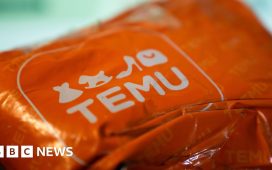The thermal vacuum test occurred at ISRO’s Satellite Integration and Test Establishment in Bengaluru. It’s one of a battery of tests the satellite will face leading to launch. Other tests will ensure it can withstand the shaking, vibration, and jostling that it will encounter during launch.
Scheduled to launch in early 2024, the satellite will scan nearly all the planet’s land and ice twice every 12 days, monitoring the motion of those surfaces down to fractions of an inch.
Short for NASA-ISRO Synthetic Aperture Radar, NISAR is the first space hardware collaboration between NASA and ISRO, on an Earth-observing mission.
It will be able to observe movements from earthquakes, landslides, and volcanic activity and track dynamic changes in forests, wetlands, and agricultural lands.
NISAR, partially covered in gold-hued thermal blanketing, entered the vacuum chamber on October 19. Over the following week, engineers and technicians lowered the pressure to an infinitesimal fraction of the normal pressure at sea level.
Discover the stories of your interest

They also subjected the satellite to an 80-hour “cold soak” at 14 degrees Fahrenheit (minus 10 degrees Celsius), followed by an equally lengthy “hot soak” at up to 122 F (50 C). This simulates the temperature swings the spacecraft will experience as it is exposed to sunlight and darkness in orbit.ISRO and JPL teams worked around the clock during the three-week period, testing the performance of the satellite’s thermal systems and its two primary science instrument systems – the L-band and S-band radars – under the most extreme temperature conditions they will experience in space.
This latest round of testing followed 20 days of testing in September in which engineers used ISRO’s compact antenna test facility to evaluate whether the radio signals from the two radar systems’ antennas passed requirements. Blue foam spikes lining the facility’s walls, floor, and ceiling prevent radio waves from bouncing around the room and interfering with measurement.
With thermal vacuum and compact antenna tests successfully done, NISAR will soon be fitted with its solar panels and its nearly 40-foot (12-meter) radar antenna reflector, which resembles a snare drum and will unfold in space at the end of a 30-foot (9-meter) boom extending from the spacecraft.
The satellite will undergo additional tests before being packed up and transported about 220 miles (350 kilometers) eastward to Satish Dhawan Space Centre, where it will be mounted atop ISRO’s Geosynchronous Satellite Launch Vehicle Mark II rocket and sent into low Earth orbit.
NISAR is an equal collaboration between NASA and ISRO and marks the first time the two agencies have cooperated on hardware development for an Earth-observing mission.
NASA’s Jet Propulsion Laboratory, which is managed for the agency by Caltech in Pasadena, California, leads the U.S. component of the project and is providing the mission’s L-band SAR.
NASA is also providing the radar reflector antenna, the deployable boom, a high-rate communication subsystem for science data, GPS receivers, a solid-state recorder, and payload data subsystem.
U R Rao Satellite Centre (URSC) in Bengaluru, which leads the ISRO component of the mission, is providing the spacecraft bus, the launch vehicle, and associated launch services and satellite mission operations. ISRO’s Space Applications Centre in Ahmedabad is providing the S-band SAR electronics.










